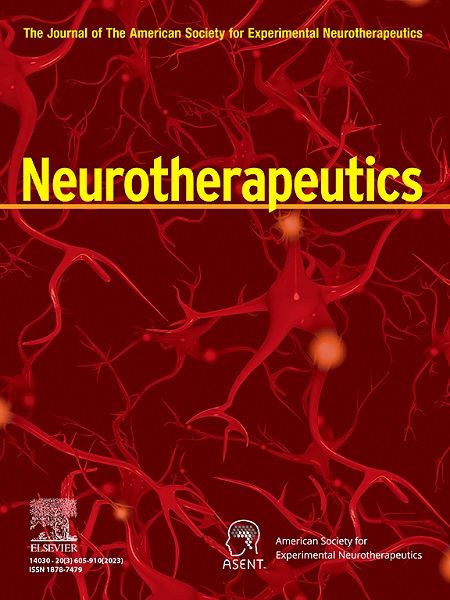VP3.15, a dual GSK-3β/PDE7 inhibitor, reduces glioblastoma tumor growth though changes in the tumor microenvironment in a PTEN wild-type context
IF 6.9
2区 医学
Q1 CLINICAL NEUROLOGY
引用次数: 0
Abstract
Glioblastoma (GB) is an incurable cancer of the brain, and there is an urgent need to identify effective treatments. This may be achieved by either identifying new molecules or through drug repurposing. To ascertain the therapeutic potential of known GSK-3β and/or PDE7 inhibitors in GB, a drug screening was conducted using a Drosophila melanogaster glioma model. VP3.15, a dual inhibitor with anti-inflammatory and neuroprotective roles in multiple sclerosis, was selected for further investigation. VP3.15 demonstrated robust anti-tumor efficacy against a panel of human and mouse GB cells; however, its capacity to inhibit orthotopic growth was only observed in a wild-type PTEN cell line. The in vivo dependence on PTEN was further suggested with the results in fly gliomas. The analysis of the VP3.15-treated tissues revealed a notable reduction in the number of myeloid cells and in the degree of vascularization. Mechanistic studies indicate that VP3.15 diminishes the production of GAL9, a key molecule that stimulates pro-angiogenic macrophages. Our findings substantiate the pro-tumoral function of GSK-3β, which might depend on the PTEN genetic status. Furthermore, we have delineated the therapeutic potential of VP3.15, which acts through the inhibition of the supportive role of the GB microenvironment. This molecule could be safely and effectively utilized after PTEN characterization in GB patients.
VP3.15是一种双重GSK-3β/PDE7抑制剂,在PTEN野生型背景下,通过改变肿瘤微环境来降低胶质母细胞瘤肿瘤的生长。
胶质母细胞瘤(GB)是一种无法治愈的脑癌,迫切需要找到有效的治疗方法。这可以通过识别新分子或通过药物再利用来实现。为了确定已知GSK-3β和/或PDE7抑制剂在GB中的治疗潜力,使用果蝇神经胶质瘤模型进行了药物筛选。VP3.15是一种在多发性硬化中具有抗炎和神经保护作用的双重抑制剂,被选中进行进一步的研究。VP3.15对人、小鼠GB细胞均表现出较强的抗肿瘤作用;然而,其抑制原位生长的能力仅在野生型PTEN细胞系中观察到。PTEN在果蝇胶质瘤中的实验结果进一步证实了PTEN在体内的依赖性。对vp3.15处理组织的分析显示,髓细胞数量和血管化程度显著减少。机制研究表明VP3.15减少GAL9的产生,GAL9是刺激促血管生成巨噬细胞的关键分子。我们的发现证实了GSK-3β的促肿瘤功能,这可能取决于PTEN的遗传状态。此外,我们已经描述了VP3.15的治疗潜力,它通过抑制GB微环境的支持作用起作用。该分子经PTEN鉴定后可在GB患者中安全有效利用。
本文章由计算机程序翻译,如有差异,请以英文原文为准。
求助全文
约1分钟内获得全文
求助全文
来源期刊

Neurotherapeutics
医学-神经科学
CiteScore
11.00
自引率
3.50%
发文量
154
审稿时长
6-12 weeks
期刊介绍:
Neurotherapeutics® is the journal of the American Society for Experimental Neurotherapeutics (ASENT). Each issue provides critical reviews of an important topic relating to the treatment of neurological disorders written by international authorities.
The Journal also publishes original research articles in translational neuroscience including descriptions of cutting edge therapies that cross disciplinary lines and represent important contributions to neurotherapeutics for medical practitioners and other researchers in the field.
Neurotherapeutics ® delivers a multidisciplinary perspective on the frontiers of translational neuroscience, provides perspectives on current research and practice, and covers social and ethical as well as scientific issues.
 求助内容:
求助内容: 应助结果提醒方式:
应助结果提醒方式:


